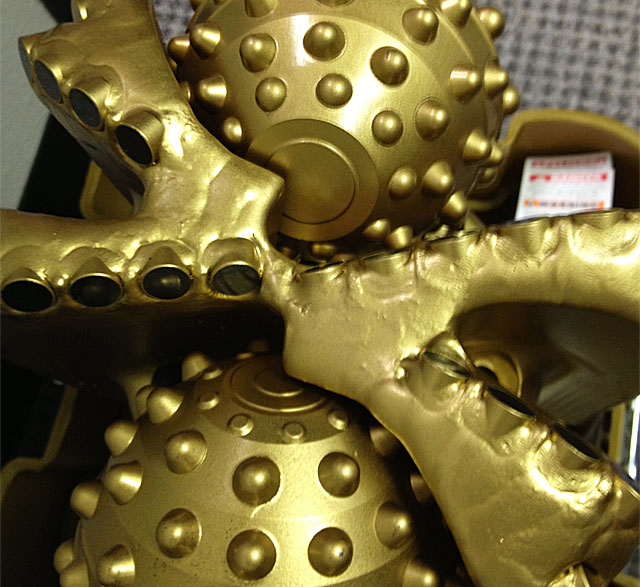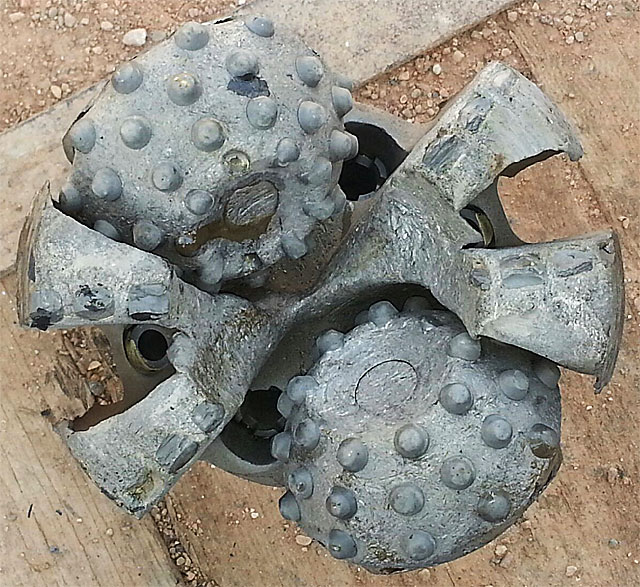Remember this post? We finally got to run that fancy drill bit, two months later than planned thanks to some unexpected complications in the previous well. (If you work in the oil industry, you may recognize the phrase “unexpected complications” as a practical synonym for “business as usual.”)
We drilled through a very tough formation that was up to 100% chert, and even this specially designed bit met its match. To refresh your memory, here’s what the new bit looked like:

And here’s what it looked like coming out of the hole, after drilling about 900′ in 80 hours:

Quite a difference. The bit was under-gauge (meaning that it had a smaller diameter than when it went in, and drilling a smaller hole than planned can cause huge problems later), and the cones were frozen and perilously close to coming off completely. The diamond cutters on the “fins” were completely worn off, and the bit was badly cored (the phenomenon where the center of the tool is worn down).
At first glance, you might think the experiment was a failure, but it’s not quite that straightforward. What we don’t know is how a conventional bit might have fared in that same rock formation. We might have destroyed multiple bits trying to drill through that chert; this one came out ugly, but it came out in one piece, and came close to reaching our goals for it.
Is it worth the extra money we paid for it? That’s something the engineers and our management will have to decide. But we got to see another vivid example of the challenges we face in drilling for oil in the Permian Basin.
Discover more from The Fire Ant Gazette
Subscribe to get the latest posts sent to your email.
